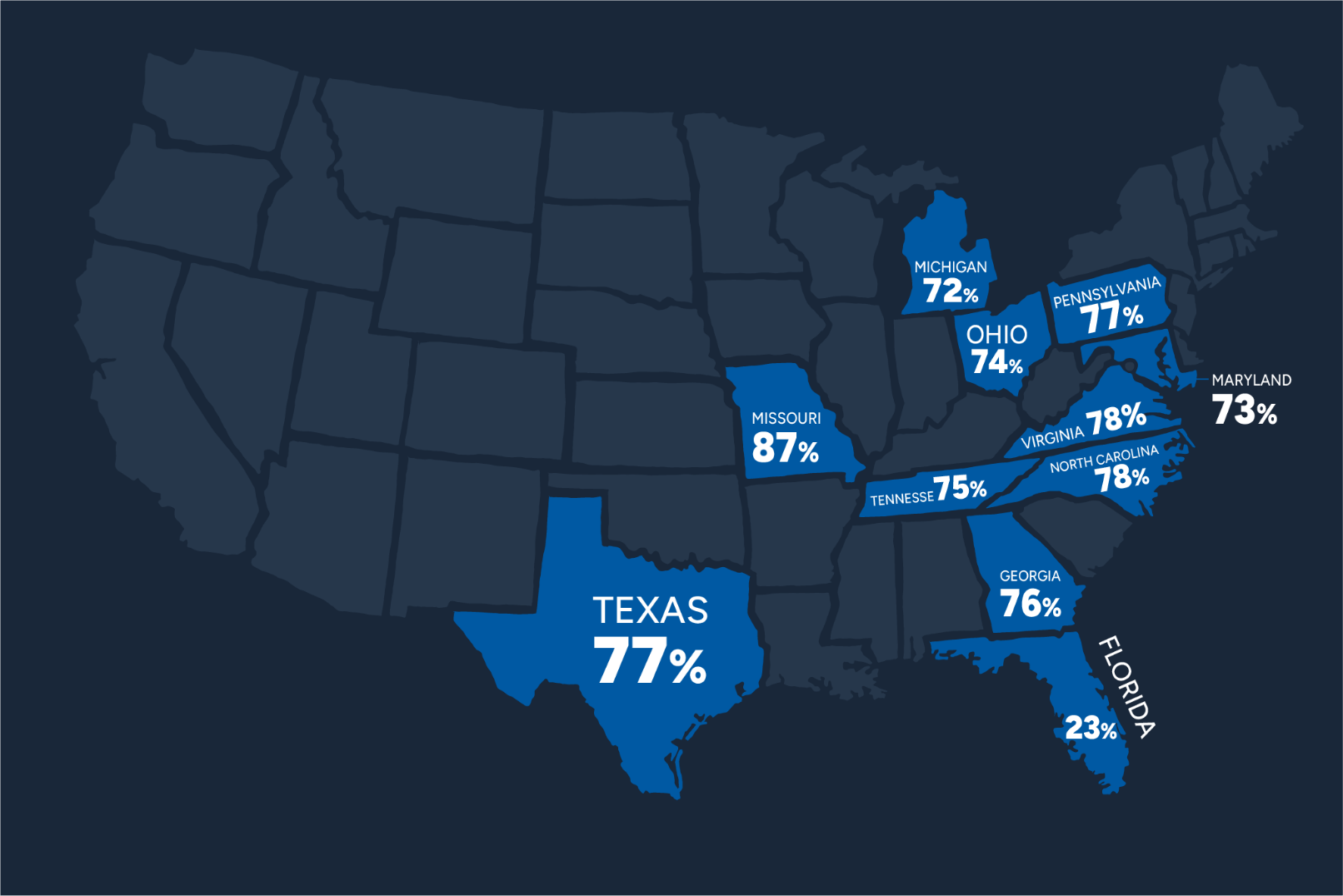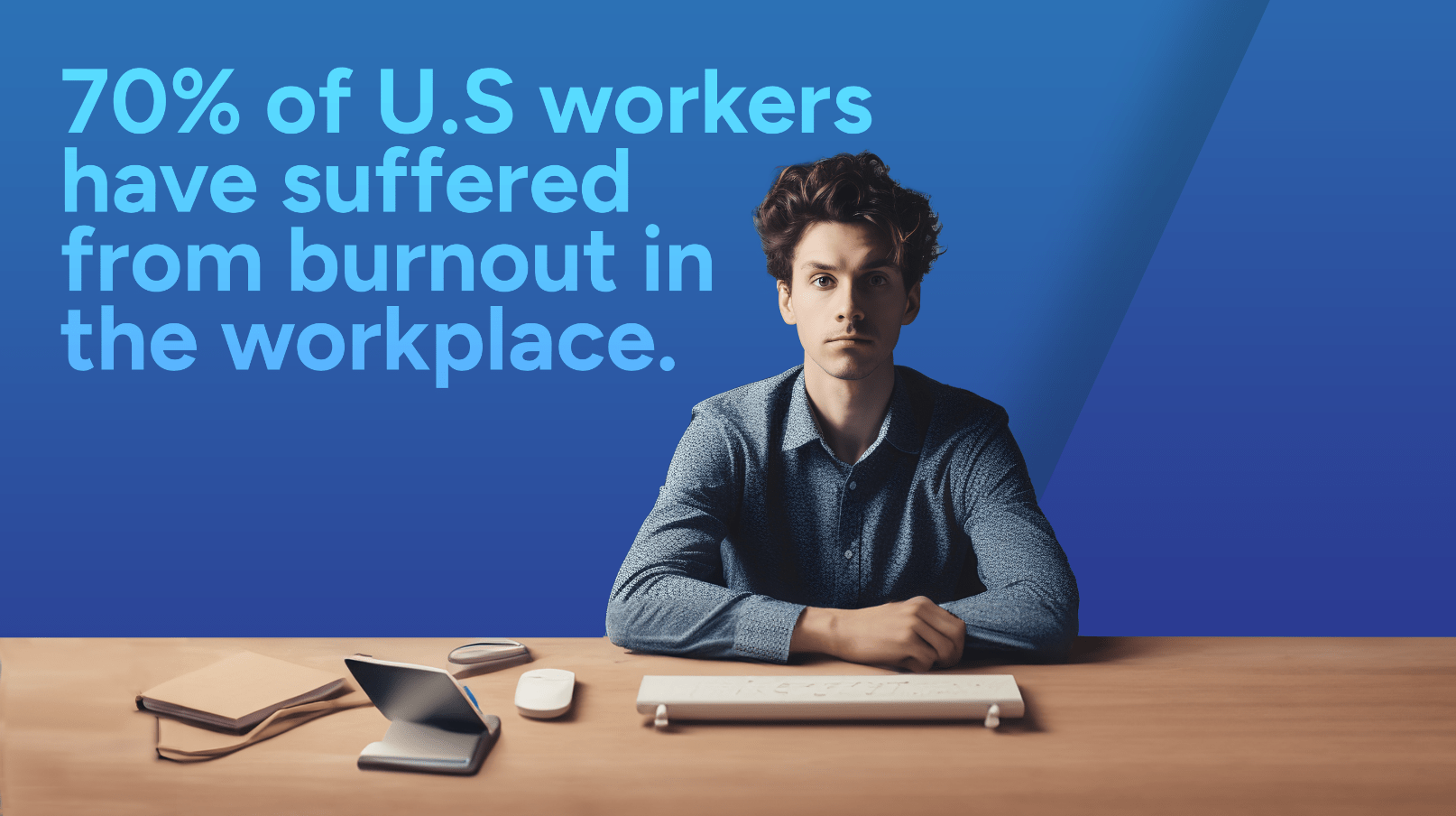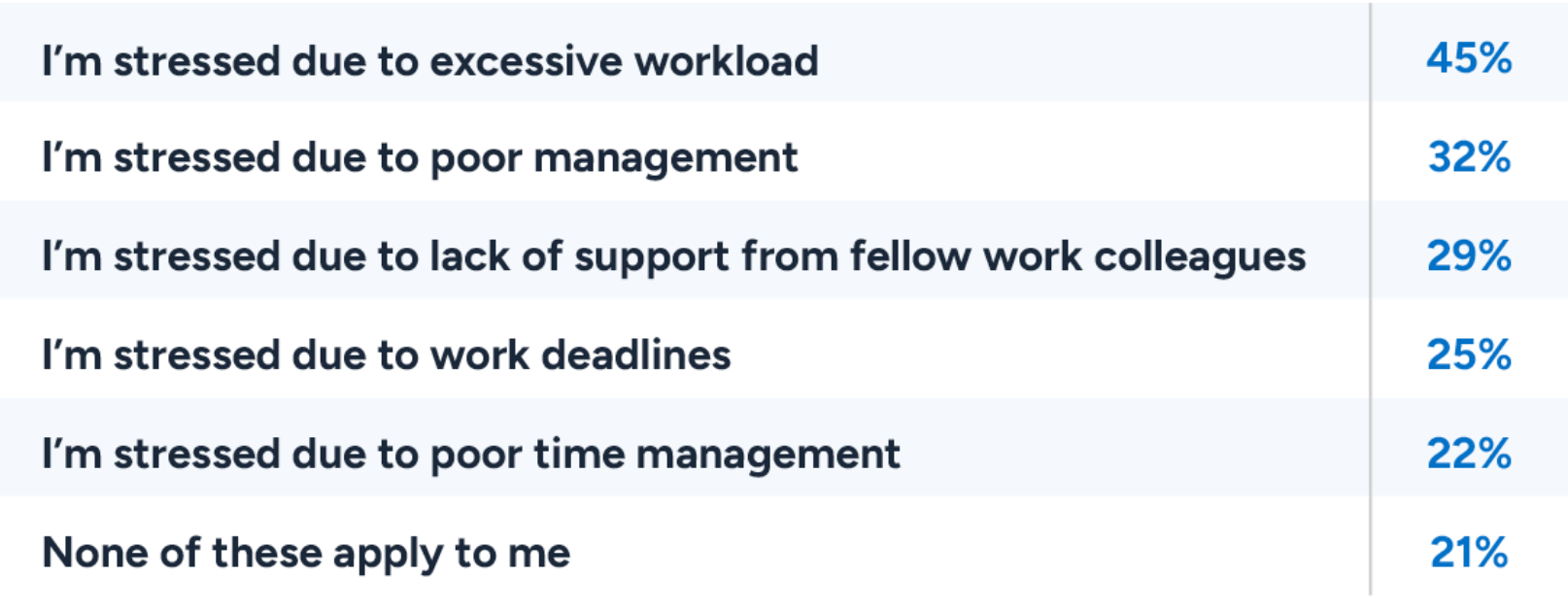Whether you’ve just stepped into your first office job after university, or you’ve been climbing the corporate ladder for some time, you’re likely already very familiar with the term burn-out.
Defined as exhaustion caused by chronic workplace stress, burn-out can see sufferers experiencing a general feeling of exhaustion despite good sleep, increasing mental distance from their job, and even cynicism around the work they do.
In some cases, burnout may even see employees having a mental break or stepping away from their jobs entirely in order to recover. And sadly, this isn’t a phenomenon that seems to be going away any time soon.
But just where in America is burn-out the most problematic?
To find out, we ran a survey of 1,500 workers across the US between the ages of 18-65 to see which roles and which states saw the greatest degree of stress overall. Keep reading to find out.
America’s most burnt-out states

When it comes to the states of America experiencing the highest degree of stress, the worst culprit is by far Missouri, with 87% of those we spoke to saying they suffered from burnout.
And as it turns out, that 87% is almost a full 10% more than North Carolina, which placed joint second at 78%, being matched alongside Virginia for particularly high levels of workplace strain.
These states were then followed up by Pennsylvania and Texas in joint third, with a total percentage of 77% for each. Before seeing Georgia and Tennessee taking the fourth and fifth spots, with 76% and 75% of those we surveyed saying they experience chronic stress at work in these states.
In fact, on a macro level when looking at the results of our survey overall, it seems a full 70% of respondents claimed to have experienced workplace burn-out due to stress, with the majority of the affected being aged between 18-24 (77%).
As for a closer examination, it appears middle management sees the greatest degree of burn-out at 76%, closely followed by those at a C-Suite level at 74%.

What are the most common causes of workplace burnout?
Now that we know where in the US experiences the highest degree of workplace burnout, let’s look at what the root causes of such stress tend to be. And right off the bat, and as no real surprise, most of those we surveyed said it was due to an excessive workload (45%).
But while this is an inherent problem, it’s clearly not the sole cause. Poor workplace management appears to be another key factor, being flagged by 32% of our survey respondents, as well as a lack of colleague support being noted by a further 29%.
Finally, there were also many other common office stressors, such as 25% mentioning stress due to deadlines and a further 22% noting that poor time management often becomes a contributing factor for such issues.
As for where these issues are most prevalent, at least 49% of women said that excessive workload was the main issue for them, with another 36% pointing to a lack of colleague support.
And when looking at different business positions, it appears that people at all levels of seniority (excluding those in a C-Suite position) agreed that excessive workload was the main factor in their stress.

How many employees work outside their contracted hours?
Given that an excessive workload is arguably the main contributor to workplace stress, perhaps it shouldn’t come as a shock that many of those we surveyed stated that they often worked outside of their contracted hours.
A full 56% said they would check and reply to emails after work hours, while another 54% said they would check emails outside of work hours – i.e., over the weekend or while on holiday!
Many of those we surveyed also said they would start work earlier than their assigned start time (41%), with another 40% admitting to working longer than contracted on most days.
In fact, only 15% of those we spoke to said they did none of the above. But out of those who did respond, 50% of those aged 45-51 said they started work earlier than required, with another 44% working after their contracted hours.
As for the impact of after-work hours on work positions, senior and intermediate managers seem most likely to check emails after work at 65%, with senior managers working both earlier and later than others at 66% and 56% respectively.
How does burnout affect employees out of work?
Given that so many employees appear to be working around and outside of work hours to meet the demands of their jobs, it goes without saying that this often affects their personal lives on a regular basis.
A full 67% said such issues had affected their social lives as a whole, with 35% saying it had proven a sticking point for their friendships, while 44% said that their attitude to work had impacted their relationship with their family.
But it doesn’t stop there. Another 42% believe that the impact of workplace stress has damaged their romantic relationships, as raised by 52% of business owners. However, overall, it seems junior management roles see the biggest impact on their social lives at 75%.
What is the most stressful time of the year to work?

So, it’s quite clear that there is a lot of stress being experienced by those working across America, but that begs the question – is there a time of year when jobs are seen as being the most stressful?
Well, as it turns out, the answer is most definitely yes! Perhaps coming as a surprise to no one in particular, December is seen as the most stressful period of work in the year, being flagged by 31% of those we surveyed.
This was then followed by January at 19% and November at 9%. Interestingly, all other months of the year sat at a low of 4-6%, suggesting that the stress of getting ready for the holidays can be found in all areas of people’s lives.
However, just because there are only a few months of the year that really get people stressed, that doesn’t mean there aren’t certain days or times of the week which put people on edge.
Monday’s seem to be a particularly nasty culprit for this, with 53% saying it was the most stressful day of the week. This was followed by Friday (14%). In stark contrast to these days, only 9% of respondents said they found Thursdays to be the most stressful day of the week
And as for time periods in the day, 9am-10am appears to be the time when stress is most prevalent for people, which makes sense given it’s the time when the average US employee is most likely to start work, though 7am-8am and 2pm-3pm were also noted as being potentially stressful times, being noted by 14% and 10% of respondents respectively.
Do any employees receive support for burnout?
Finally, given the volume of people claiming that they’ve experienced work-related burnout in some form, it’s worth touching on whether or not enough is being done to support workers in these positions.
Well, unfortunately, even though 70% of respondents claimed they’d suffered from burn-out, at least 46% said they’ve never raised this as an issue with their manager. And out of the 34% who had, only 21% said they’d received support when they asked, with just 14% saying it was sufficient to solve their problem.
Worst of all, it seems that a full 19% of those we spoke to said that any requests for help they had made had essentially been ignored by their managers.
Perhaps then, given most employees don’t wish to raise these issues, it’s no real shock that 65% of respondents said they’d considered moving jobs, with 65% of those we asked being women and 62% men. It also seems to be the case for 73% of intermediate managers and 58% of business owners.
Take a load of your employees with VoiceNation
The sad truth is that chronic stress and burnout seem to be an all too common issue for those working in America. But the good news is that there are a few things you can do to help reduce the burden on yourself and your staff – such as making use of VoiceNation’s Live Answering Service!
With our team of Virtual Receptionists ready to handle all your incoming calls, your staff can focus on doing only what their job requires of them – nothing more. And not only that, but with a live answering service like ours, you can even save money on overheads!
Get in touch to learn more about just how we can help your business, and don’t forget to ask about our free trial period.
